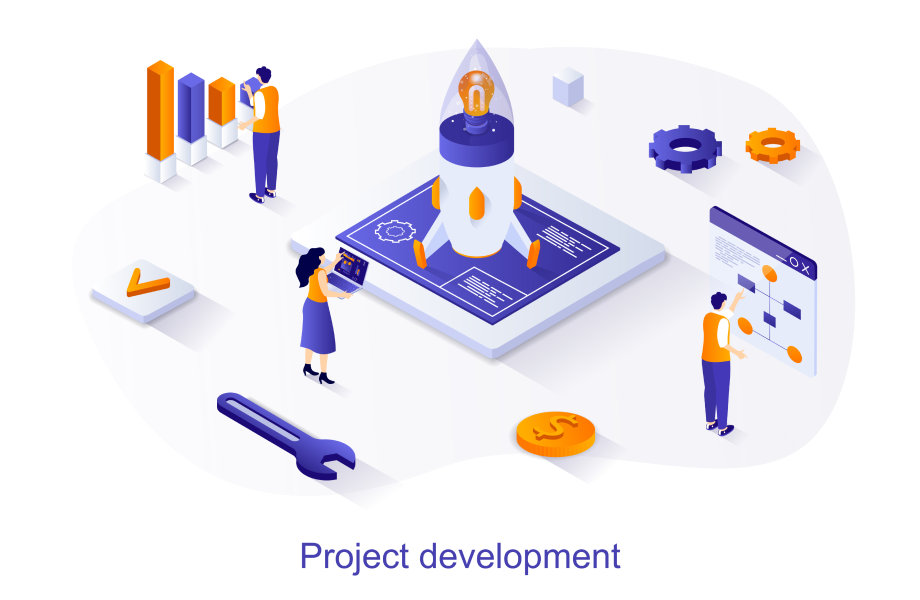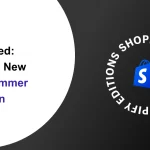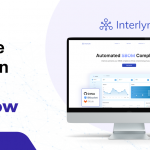MVP Product Development – How to Design and Build Minimum Viable Product
- Anurag Pandey
- Last updated on November 30, 2023
- MVP, SaaS, Website Design
- 11 minutes read
Table of Contents
Have you ever thought about what successful apps such as Facebook and SaaS products have in common? They’ve all used MVP development to grow into mature platforms beloved by millions of customers. When establishing a new application, many IT startups aim for a minimally viable product as their initial goal. It’s a method for gathering the most validated information about the target audience with the least amount of work.
Well, MVP holds various products with ample features to attract early adopters and verify a product concept early in the product development cycle. In industries like software, the MVP can assist the product team in receiving customer input as soon as possible in order to repeat and enhance the product. Let us go over how to design and build an successful MVP software development.
Meaning: Minimum Viable Product
A Minimum Viable Product (MVP) represents a simplified version of a product suitable for market testing. The concept of MVP is applicable across industries and offers identical advantages. You would send the MVP to a subset of individuals who mirror your target audience (for instance, if you are targeting “teenagers,” you would distribute your Minimum Viable Product to a group of teens).
MVP is an early version of a product, such as a SaaS (software as a service) application, that is intended to ensure that the product vision and strategy are in line with market demands.
“To put it simply, an MVP is a minimal version of a product that enables innovators to obtain product validation from real customers with the least amount of effort.”
What Does A Viable Product MVP Look Like
We’ve established that the MVP is a bare-bones version of your product, but what exactly does it mean?
The goal of a Minimum Viable Product is not to create something and then test it to determine how well it works. Its aim to run an experiment as quickly as possible in order to learn anything about the eventual route your product should take in order to be successful in the market. With the MVP, you design only the key functionalities of your product so that it can become a sort of basic model capable of achieving the primary aim you want to attain. For example, if you want to build an product that addresses a specific problem for its consumers, the MVP should give this capability, but it can be devoid of any extra features or elements.
Helpful Hints for the MVP Development
1. Keep the MVP simple
Begin with a minimal MVP that includes only the core elements required for the product to work. A corporation establishing a new e-commerce platform, for example: rather than developing all of the platform’s features at once, such as a loyalty programme and personalised product recommendations, the company begins with just the essential features of browsing and purchasing things.
This helps them to test the market and collect feedback from early users before investing major money in new features. Once the basic concept has been completed, the organisation can determine whether or not to test other concepts.
2. Gather feedback early and often
Collect feedback from early adopters and stakeholders on a regular basis to help guide future growth. A corporation building a new mobile product for tracking fitness and health is an example of receiving input early and frequently.

They make adjustments to the product based on this feedback, such as introducing new features like tracking water consumption and sleep, as well as resolving any issues. Throughout the development phase, they can aslo conduct surveys, interviews, and user testing to get input from early adopters. They continue to collect input at regular intervals to verify that the product is serving the demands of its consumers according to their needs or not.
3. Prioritize features
Determine the most crucial features and prioritise their development. To begin, the organisation can define the basic elements required for the programme to function, such as task assignment and tracking, deadline management, and team collaboration.
Following that, these fundamental elements are prioritised and built first. Once the MVP is out, they collect input from early adopters and stakeholders to determine which new additions would be most beneficial to them.
4. Use lean development methodologies
Agile and Scrum are popular MVP development approaches because they allow for flexibility and rapid iteration. They plan and execute their development process using the Agile development technique and the Scrum framework. They divide the work into short, digestible portions called sprints, and they assess and reflect on their progress at the conclusion of each race.
5. Test and measure
Metrics can also be used to track the MVP’s performance and make data-driven decisions about future development. Companies can make data-driven decisions about which features to prioritise, to make some changes in UX/UI design, and areas for development by testing and measuring the MVP.
How To Build Minimum Viable Product: A Step-By-Step Guide
Step 1: Market research
Its not only that your MVP development process should begin with market research, but the entire product development project should be.
Market research is what enables you to determine who will require your software and how to reach them. Consider who these folks are. What type of device and platform do they prefer? Things they required to? ANd their desires?
Of course, in addition to asking yourself these questions and thinking on them, you should actually ask them. You can conduct market research through surveys and direct queries. This stage is made very simple in 2023 because of social media. You may reach out to a large number of people and get their feedback for free using them.
At the end of your research, you’ll be able to pinpoint your target audience based on specific criteria (age, gender, social standing, job, expertise, pastime, etc.). You may now use this information to give them with the service/product that they require.
Step 2: Narrow down your ideas
When you create your minimal viable product, you are reducing your software to its essentials. As a result, you must understand what its core is. This and the next steps will assist you in getting there. It is critical that you narrow down your product ideas at this point.
Consider the following:
- What is the need/problem that my software addresses/solves?
- Who will use my product and how will they utilise it?
- Why would people pick my product over dozens (if not hundreds) of other options?
- Create a feature list.
This step also aids in narrowing down the core of your mobile product and MVP development process from a technological standpoint.
It’s time to determine what kind of features should be provided to the user based on the responses you provided in the previous phase. In other words, which mobile product features would you choose to answer those questions?
The features you select here will be integrated in your Minimum Viable Product.
Step 3: Map out the user flow
It is critical that your MVP product development is centred on your users and their experiences. One of the most effective strategies to ensure that your users have a positive experience is to map out their user path.
What steps will customers take from the minute they open the product to the moment they reach their goal? You’ll have a better understanding of how to improve their experience once you’ve sketched everything out (visually). For example, you may discover that you have created a three-step process for accomplishing an action that only requires one.
When you have reduced your user flow map to its bare bones, you have obtained the structure for your viable product MVP.
Step 4: Build A Minimum Viable Product
No time is wrong to construct MVP. The preceding procedures should serve as the basis for the construction phase, which begins now.
The actual MVP development process is when WordPress developers and designers are conscientious at their work. Always keep in mind that a minimal viable product is not a lower-quality version of your product at this stage. Always prioritize quality; otherwise, you are diminishing your idea to its core essence and reducing your mobile product to its fundamental functionalities.
Step 5: Launch the Minimum Viable Product
This is also a step that necessitates some planning: more than that, this is where marketing and communication abilities come into play in the effective MVP creation process. You are now ready to launch your MVP product product whenever the MVP product development is complete. We understand that deploying an MVP is a difficult task. It takes a lot of effort, investment, dedication, and luck on your part. But do not forget that ,after launching the product, don’t blow to track your progress using metrics and analytics to see if you hit your KPIs.
Step 6: Collect and analyze feedback
No, the MVP product development process doesn’t end with the launch of the minimum viable product. On the contrary, this step can be considered the most important.
Now it’s the time in your MVP product development journey when you need to collect feedback from your audience.
Step 7: You should try to collect both qualitative and quantitative feedback.
Users share opinions to provide qualitative feedback: explaining their product usage, preferences, dislikes, and suggestions for improvement.
Quantitative feedback entails measurable and comparable data: such as identifying the count of users under 18 utilizing the product, determining the most frequently used functions based on numerical data, and analyzing various other metrics.
During this phase, another important data that you should collect is how users come to know about your product: it can give you important marketing insights.
Collecting data isn’t, of course, enough: your success building MVP process requires that you analyze those data and take powerful insights from them on how you can keep on improving your mobile product.
Methods for Prioritizing MVP Goals
There are various tried-and-true strategies for prioritising your MVP goals that you can use to guarantee you’re focusing on what matters most:
- The MoSCoW Method:
Sort your goals into four categories:
- MO (Must-haves): All of your needs or requirements required for the completion and success of a project.
- S (Should-haves): Conditions that are required for project completion but are not required.
- CO (Could-haves): Requirements that would be beneficial to have but have minimal impact if not included in the project.
- W(Will-not-haves): Every requirement that has been deemed irrelevant to the project’s timeframe.
This assists you in identifying the most vital tasks required for your MVP’s success.
Setting up a secure payment gateway may be a Must-Have goal for an e-commerce MVP, while integrating a loyalty rewards programme may be a Could-Have goal.
- Eisenhower Matrix:
Sort your goals according to the urgency and importance. Give priority to tasks that are both urgent and important, followed by tasks that are important but not urgent
An urgent and vital goal for a social networking product MVP could be to add user authentication, whereas an important but not urgent goal could be to create a user referral system.
- Impact/Effort Matrix:
Rank your objectives according to their potential impact on your MVP’s performance and the effort necessary to fulfil them. Tasks with high impact and low effort should be prioritised, followed by those with high impact and high effort.
A high-impact, low-effort goal for a project management tool MVP could be building an intuitive user interface, whereas a high-impact, high-effort goal could be adding powerful analytics and reporting features.
Last Words: It Takes Experience Building An MVP
The MVP is an integral element of your product development process, not just a test. In fact, the aim of the viable product MVP is to demonstrate the potential of your programme to investors. You can display both the products essential features and how they work, as well as user comments.
As you can see, MVP product development is not for the faint of heart. A tight timetable, limited functionality, and research are just a few of the hurdles you’ll face.
However, if you work with experienced developers then you may overcome these challenges easily. Also you can Hire React JS Developer those have the ability to guide you through MVP product development.
Interested? Contact us immediately and let’s start a conversion.
Anurag Pandey
Recent Posts
Categories
Hire Developers
About us
Popular Posts
Tags
Related Articles
Webflow vs WordPress: Which is Better for Your Website?
WordPress and Webflow are both website design platforms. However, no two websites are exactly the same; each has a unique set of requirements. As a web designer, you can select which platform to utilize to create the websites you design.
Top 12 WordPress Hosting for Your Website 2024
Would you like to establish your own WordPress website or blog? Then choosing the right wordpress website hosting is the first baby step to your successful online career. Especially when you having difficulty with core web vitals, the Largest Contentful Paint (LCP)
How to Develop an AI-powered SaaS Product in 6 Steps
AI has become a strong buzzword in the commercial sector and for good reason. SaaS as a software delivery model and AI as a technology for enhancing software product capabilities work well together. SaaS organizations, in particular, can benefit greatly from adopting AI capabilities.
Sign up for our Newsletter













